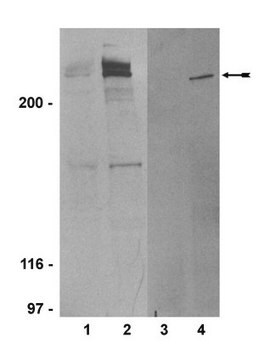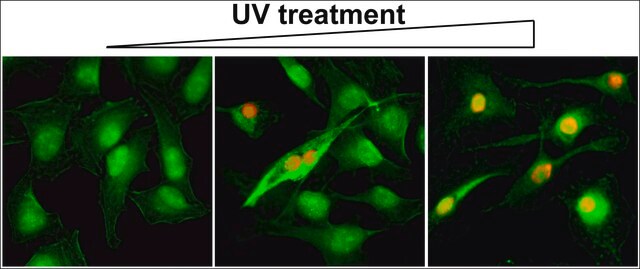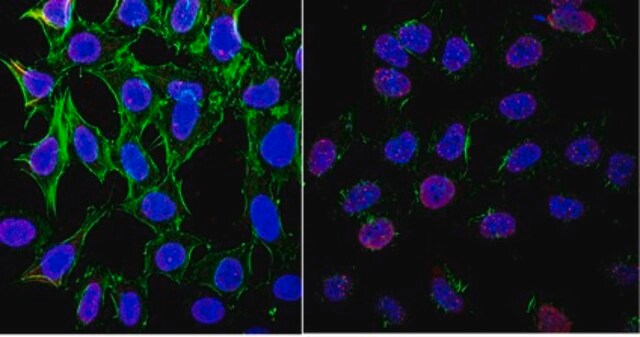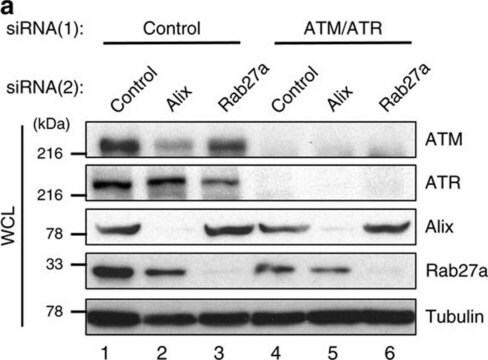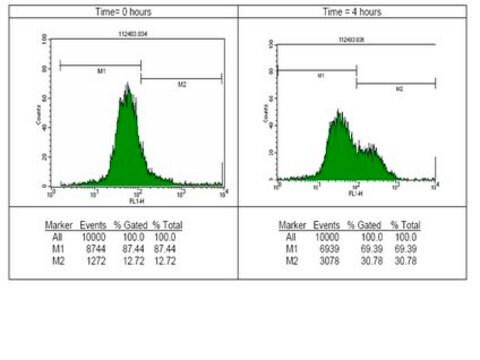MAB3806
Anti-ATM phosphoSer1981 Antibody, clone 10H11.E12
clone 10H11.E12, Chemicon®, from mouse
Synonym(s):
Ataxia Telangiectasia Mutated
About This Item
Recommended Products
biological source
mouse
Quality Level
antibody form
purified immunoglobulin
antibody product type
primary antibodies
clone
10H11.E12, monoclonal
species reactivity
mouse, human
manufacturer/tradename
Chemicon®
technique(s)
immunocytochemistry: suitable
immunoprecipitation (IP): suitable
western blot: suitable
isotype
IgG1κ
NCBI accession no.
UniProt accession no.
shipped in
wet ice
target post-translational modification
phosphorylation (pSer1981)
Gene Information
human ... ATM(472)
General description
Specificity
Immunogen
Application
Epigenetics & Nuclear Function
Cell Cycle, DNA Replication & Repair
Immunocytochemistry: Foci are detected in irradiated human and mouse fibroblasts.
Immunoprecipitation: The antibody immunoprecipitates ATM from irradiated human and mouse cells.
Optimal working dilutions must be determined by end user.
Physical form
Storage and Stability
This antibody and certain aspects of its use are disclosed and claimed in pending U.S. Patent Applications published as U.S. Patent Publication Nos. 2003/0077661 and 2003/0157572.
Analysis Note
Irradiated normal Human fibroblasts (no reactivity against non-irradiated cell extracts)
Other Notes
Legal Information
Disclaimer
Not finding the right product?
Try our Product Selector Tool.
recommended
Storage Class Code
10 - Combustible liquids
WGK
WGK 2
Flash Point(F)
Not applicable
Flash Point(C)
Not applicable
Certificates of Analysis (COA)
Search for Certificates of Analysis (COA) by entering the products Lot/Batch Number. Lot and Batch Numbers can be found on a product’s label following the words ‘Lot’ or ‘Batch’.
Already Own This Product?
Find documentation for the products that you have recently purchased in the Document Library.
Our team of scientists has experience in all areas of research including Life Science, Material Science, Chemical Synthesis, Chromatography, Analytical and many others.
Contact Technical Service